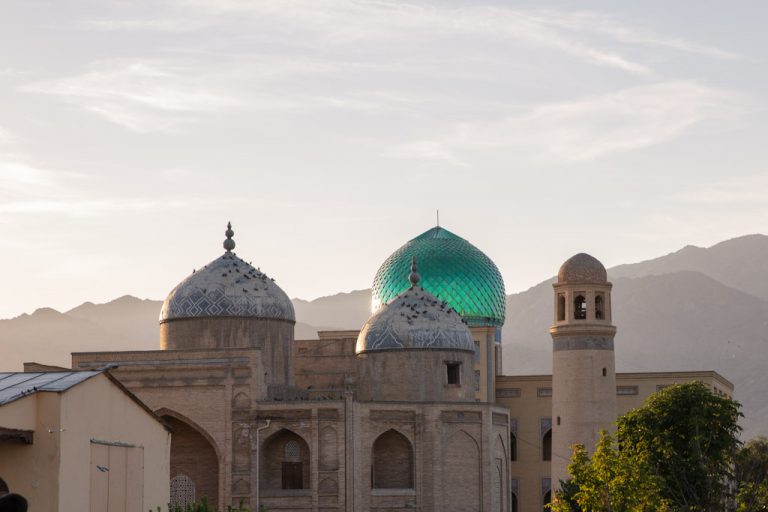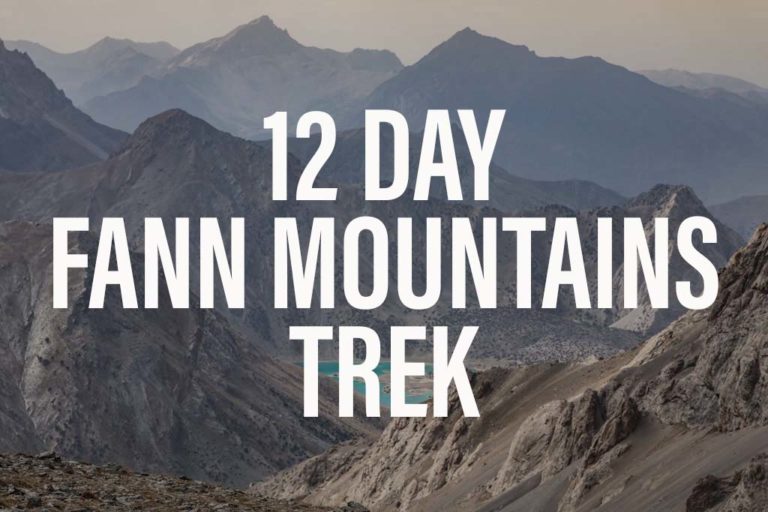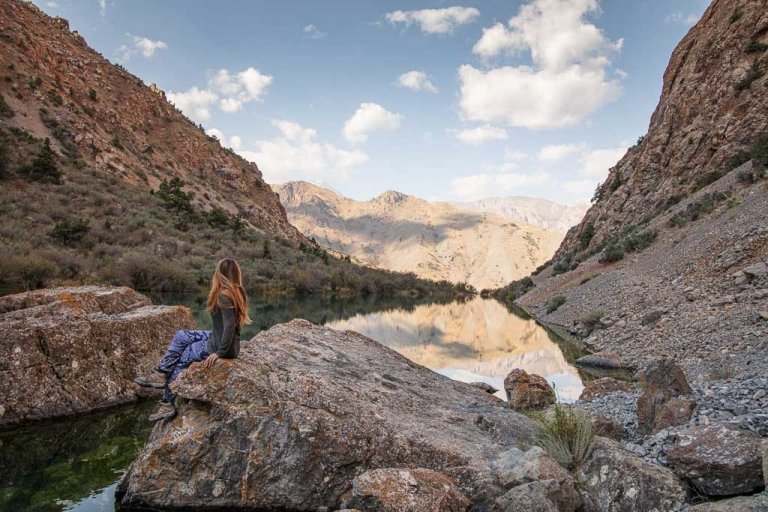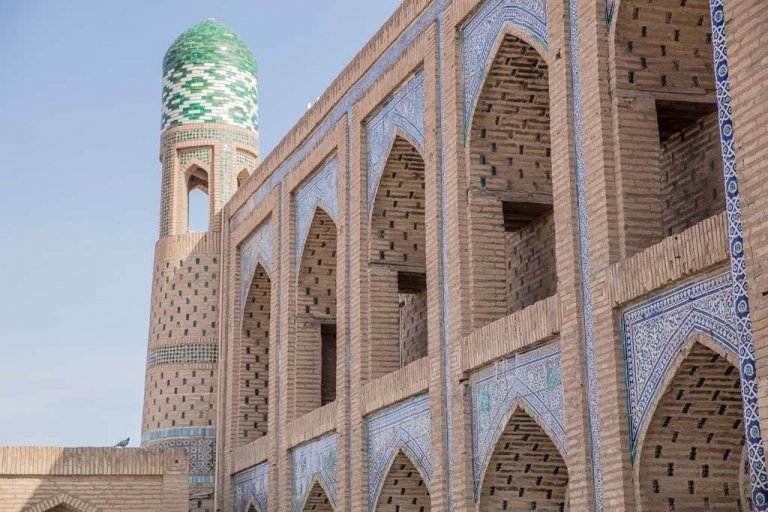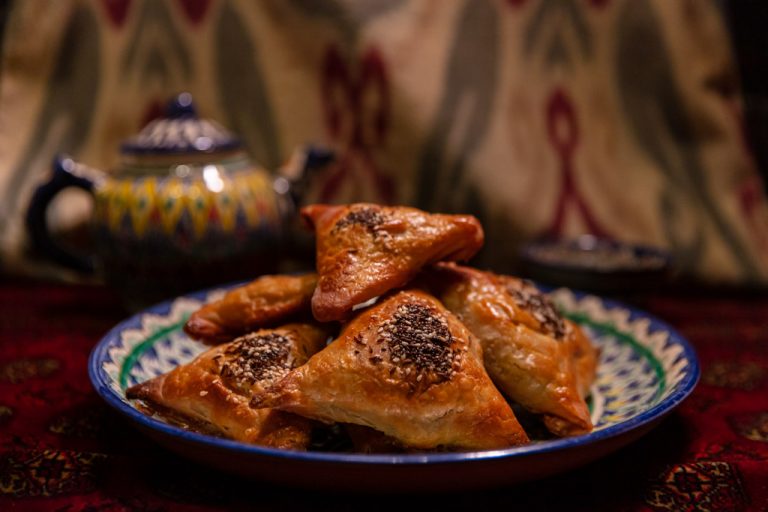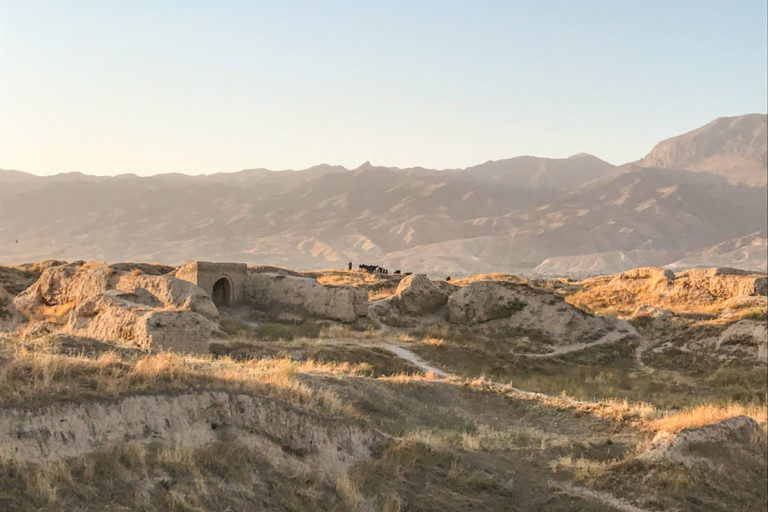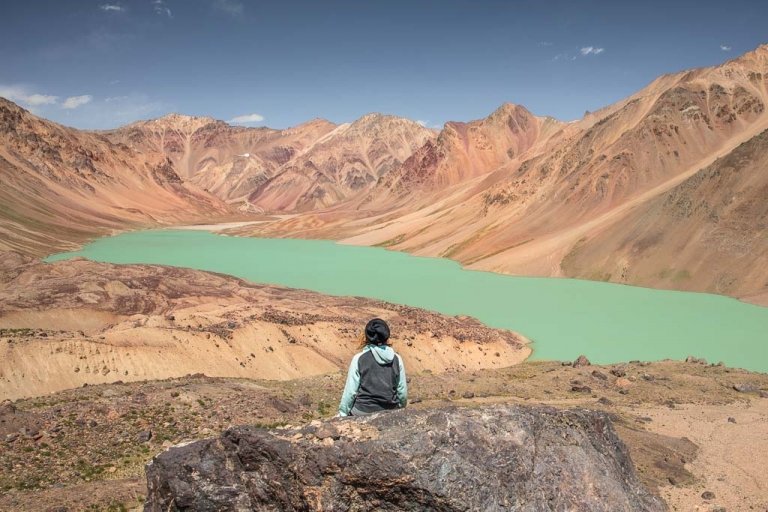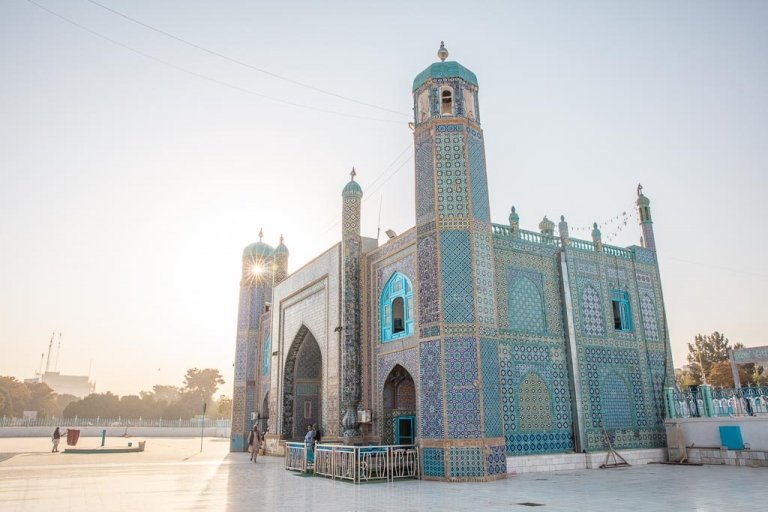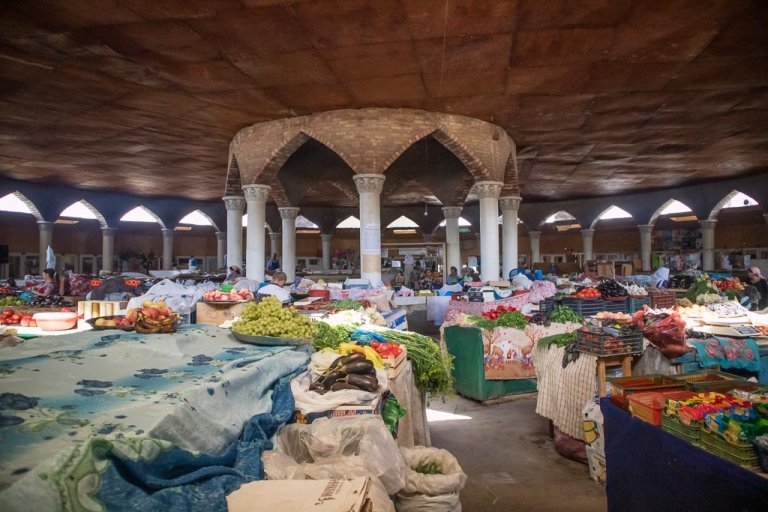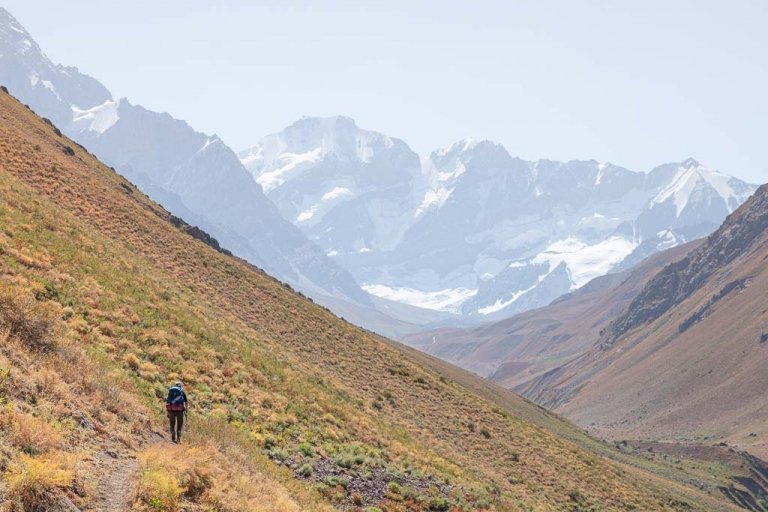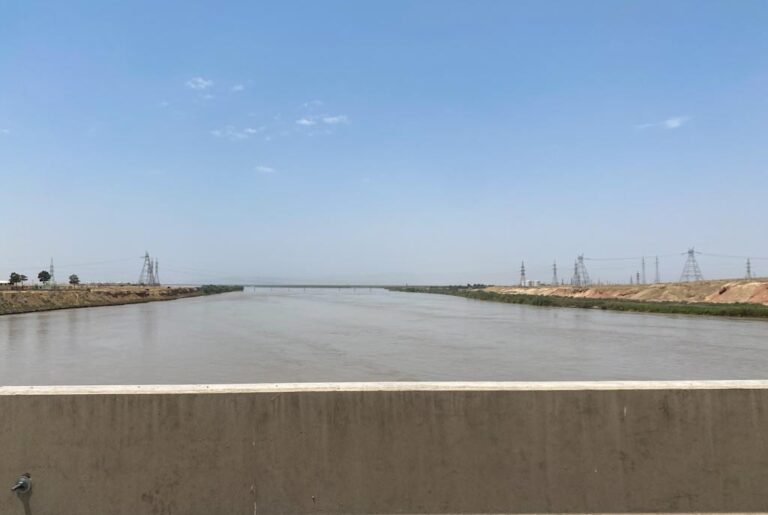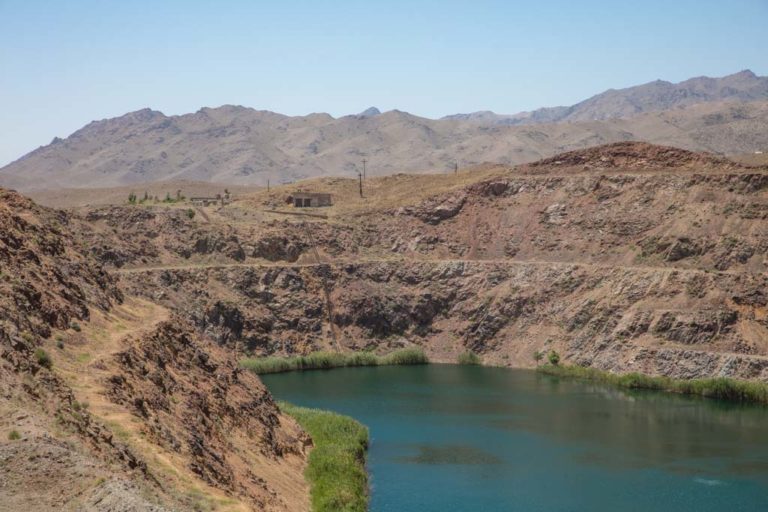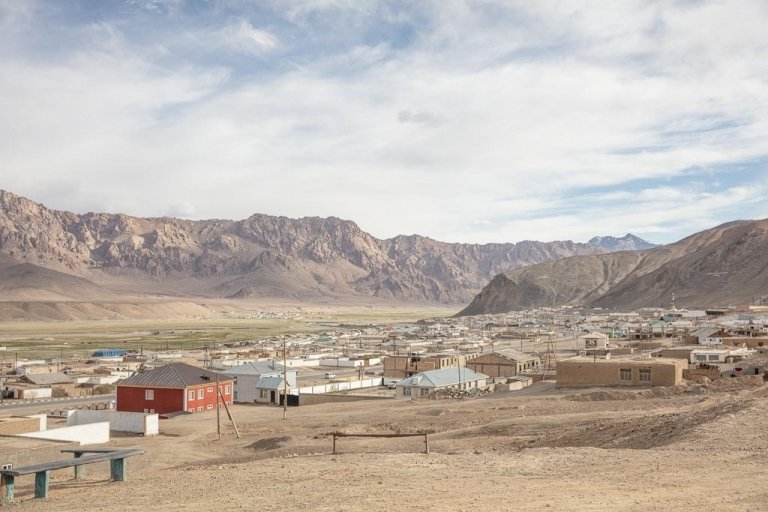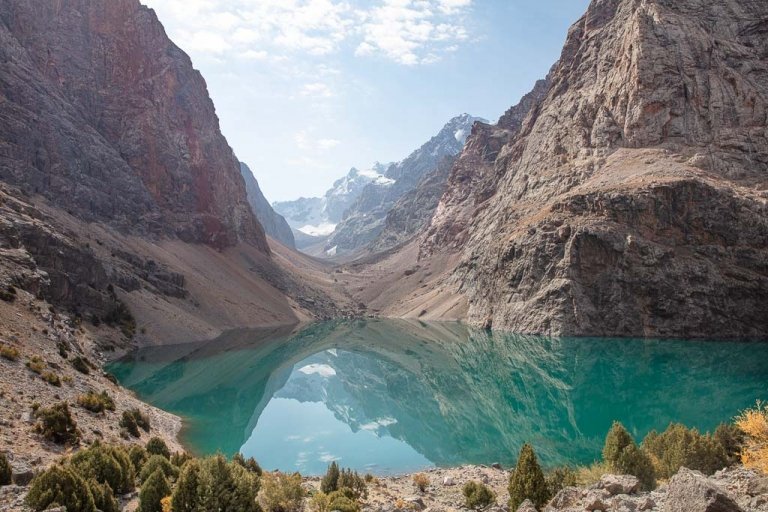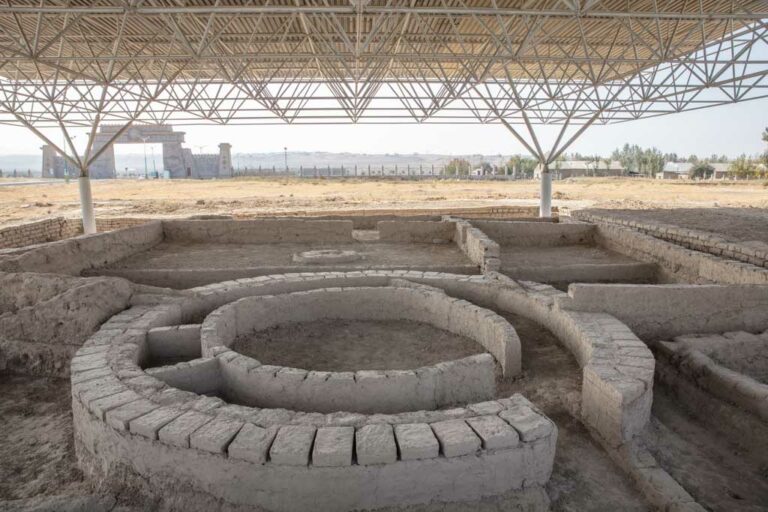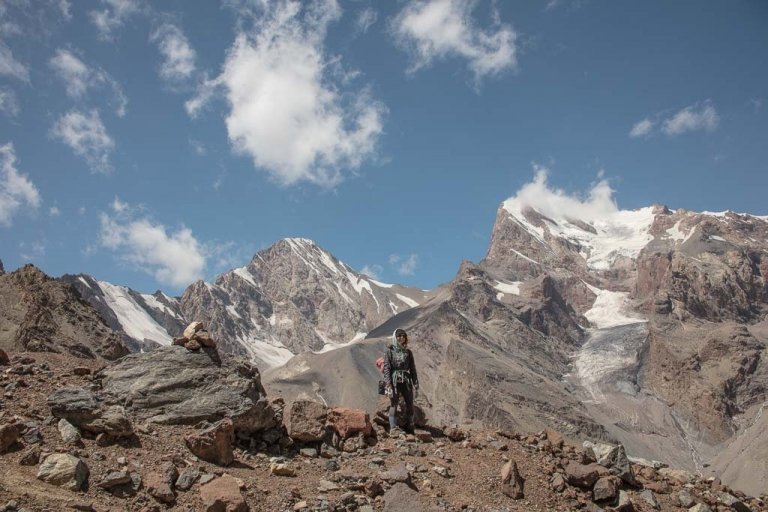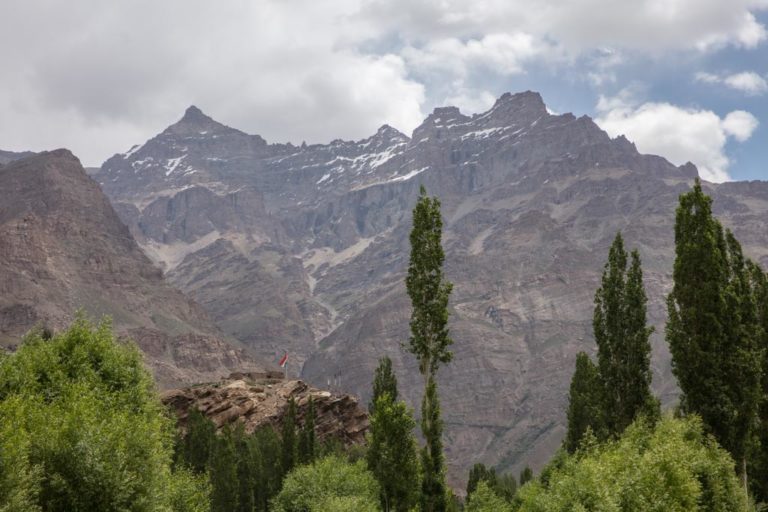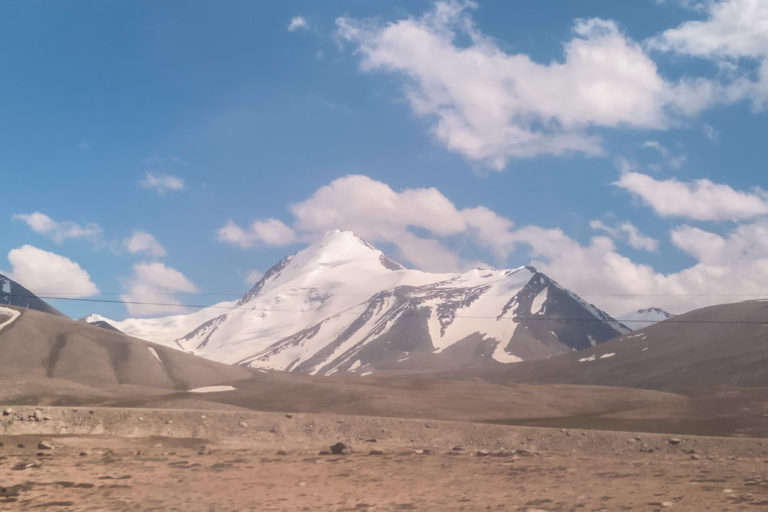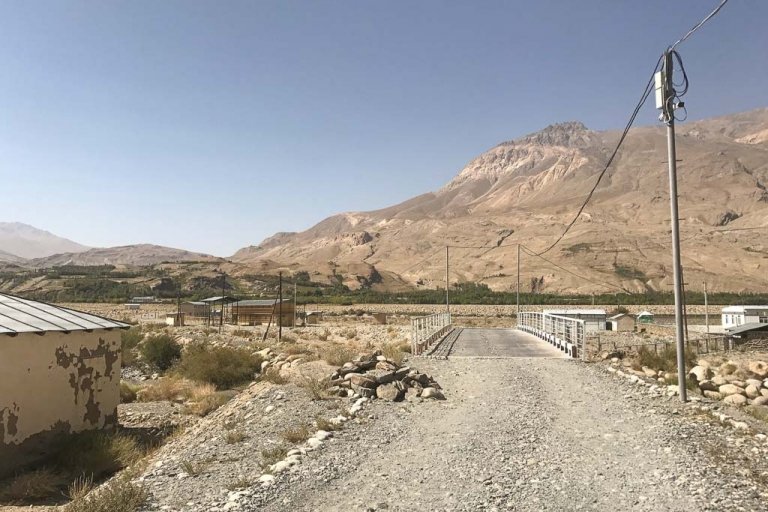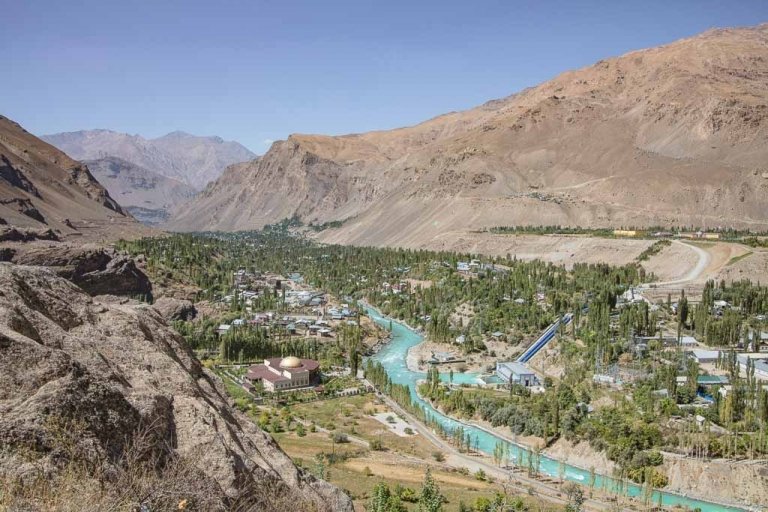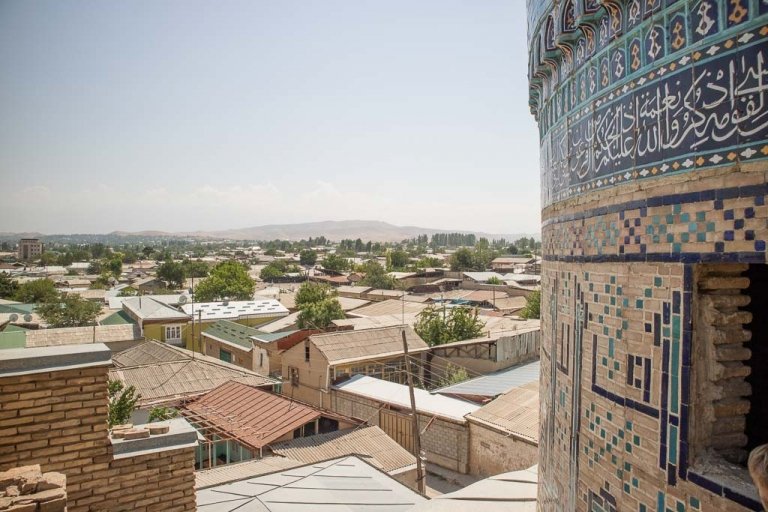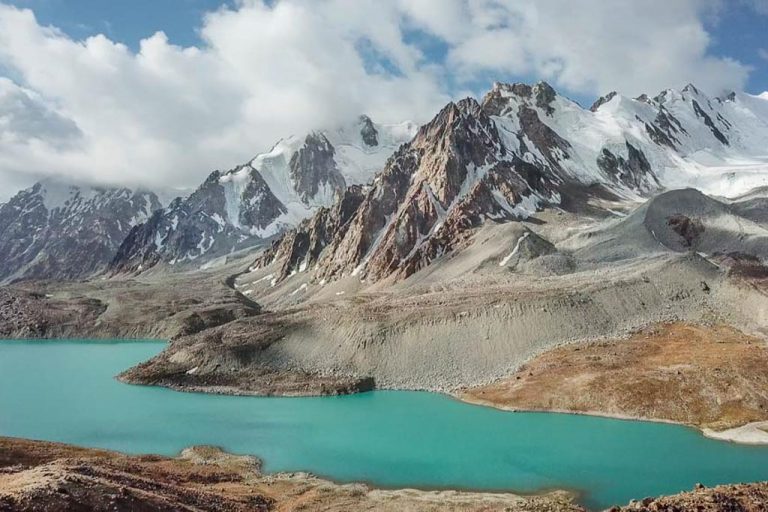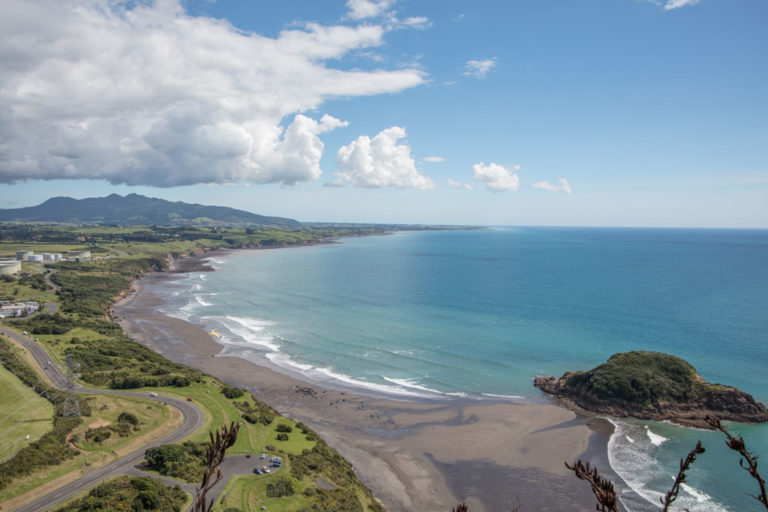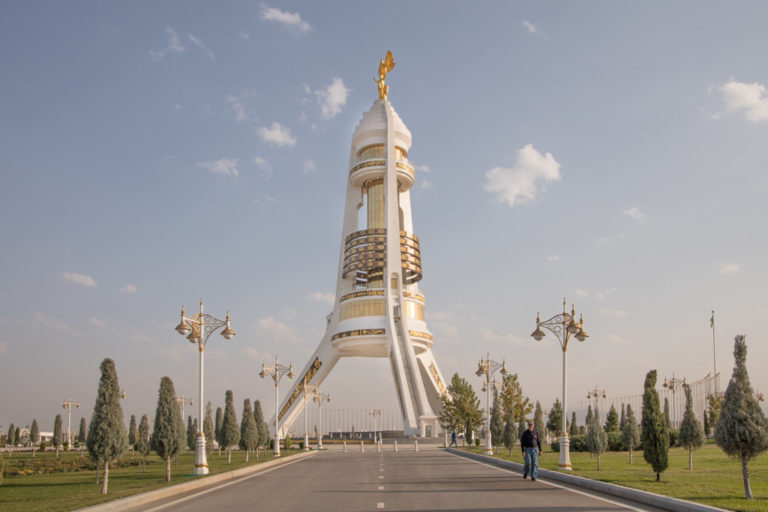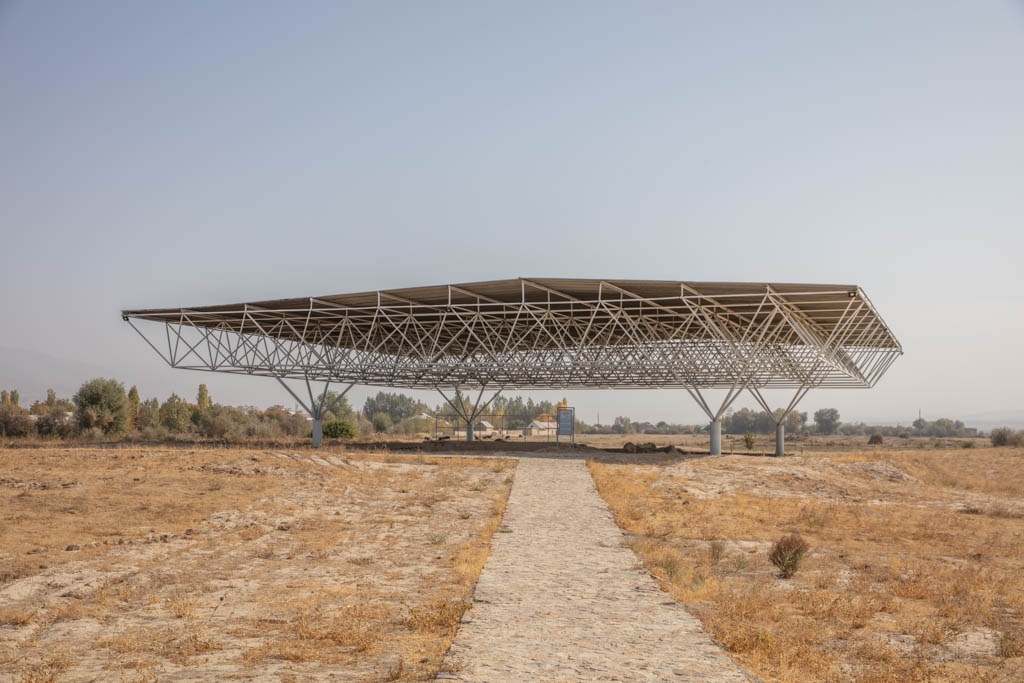
Sarazm Ruins, Tajikistan:
The Oldest City in Central Asia
Updated February 2024, Sarazm Ruins, Tajikistan: The Oldest City in Central Asia was originally published in September 2023.
Despite being the oldest city in Central Asia at over 5,500 years old, and among the oldest in the world, many travelers who make it to this region don’t know about Tajikistan’s Sarazm.
They usually end up in the Silk Road giants in Samarkand and Bukhara.
That’s not to say that these places aren’t worthy of a visit- they very much are and more than deserve to be on your Central Asia itinerary.
As a nod to its antiquity, the site was given the name Sarazm which translates to “Where the Land Begins” in the Sogdian language.
The Sogdians, of course, are the people who would go on to populate this area around Sarazm and Panjakent.
Descended from and still fairly similar to ancient Sogdian, the Yagnobi language is still spoken by inhabitants in the Yagnob Valley, whose isolation kept the ancient language alive.
If you want to read more about the Sogdian Empire’s fall in Panjakent and the death of its final ruler Divashtich as he and his people fled the Ummayads sacking Panjakent in the name of Islam to Zeravshan Valley and finally over the mountains to the Yagnob Valley, check out my Yagnob Valley Travel Guide.
Sarazm, is one of Tajikistan’s greatest archeological sites, in fact, it was Tajikistan’s first UNESCO World Heritage Site, getting its status in 2010.
Because of its history alone, Sarazm is more than worth a visit to dig deeper into the fascinating history of this region that has unfurled over thousands of years.
Even I, who has visited Central Asia and especially Tajikistan countless times over the past few years didn’t make it to the ruins of Sarazm until 2019, despite the amount of times I have stayed in Panjakent, even having visited Ancient Panjakent some of those times.
So, finally, in the fall of 2019, I made a point to visit Sarazm on the way to the Tajik-Uzbek border from Panjakent.
Need Travel Insurance and Evacuation Services for Tajikistan?
Start shopping for travel insurance plans over at IATI Insurance. Readers of the Adventures of Nicole get a 5% discount off your plan.
The Adventures of Nicole partners with Global Rescue to offer the world’s leading medical evacuation and security advisory services. To travel with peace of mind, shop evacuation coverage at Global Rescue.
About Ancient Sarazm
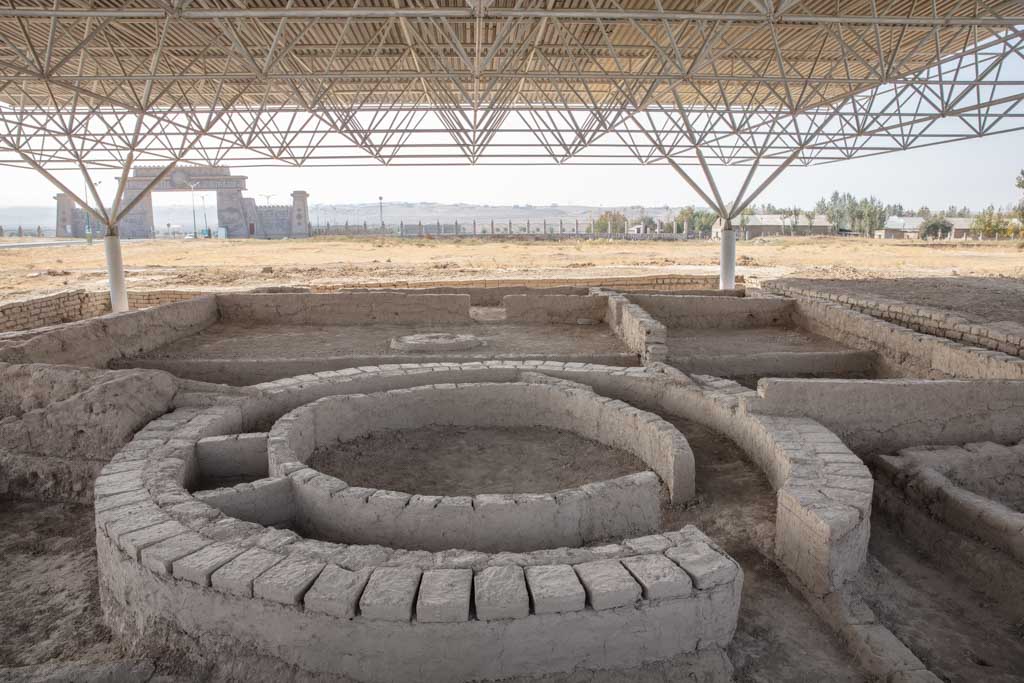
The City of Sarazm dates back to nearly 4000 BC and is situated near the village of Sohibnazar, quite close to the Uzbekistan border and about 15 kilometers west of Panjakent.
It’s estimated that the City of Sarazm formed around 3500 BC, so to put it into context, about the same time the first Pyramids of Egypt were constructed.
But for centuries, no one knew about Sarazm, that is, until around 1970 when a local from Gurach village and World War II veteran, Ashurali Tailonov stumbled across a bronze axe.
In 1976 Tailonov notified Abdullah Isakov, a Soviet archeologist of the Academy of Science of Tajikistan, which spurred a visit to the site where Tailonov discovered the bronze axe.
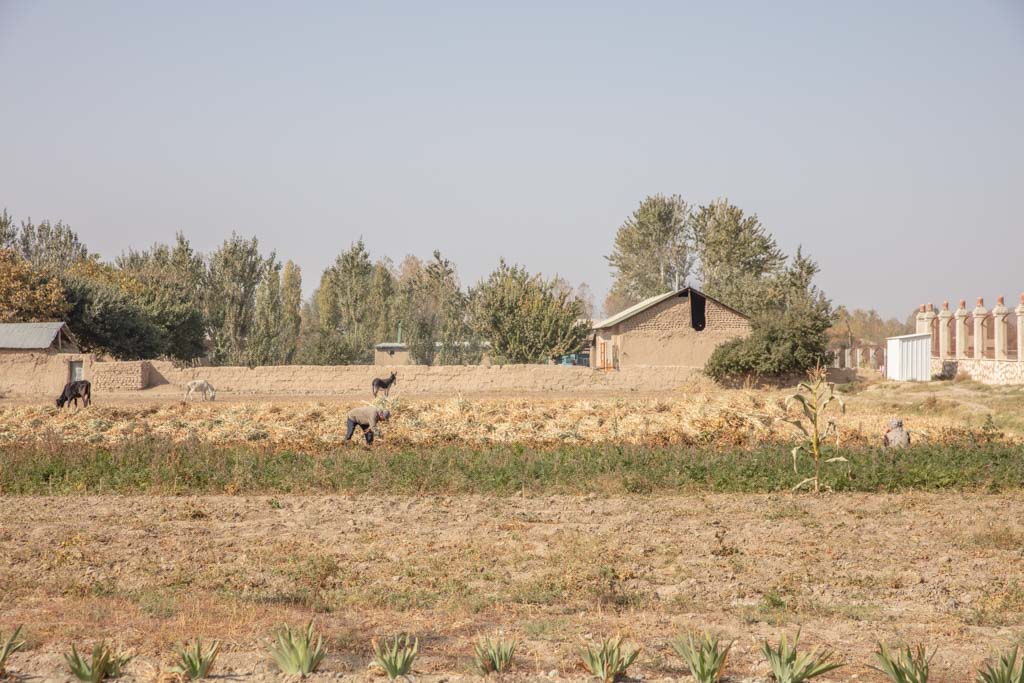
Excavations soon began in three areas nearby.
Of course, the most impressive of these findings was the excavation of the Princess of Sarazm.
In 1987, seven more areas were excavated around Sarazm to discover a plethora of historical finds.
Sarazm represents the first proto-historical agrarian society in Central Asia.
The city was also the first in Central Asia to have major economic relations with other settlements spanning from the steppes around the Aral Sea all the way to the Indus Valley.
Who Were the Inhabitants of Sarazm
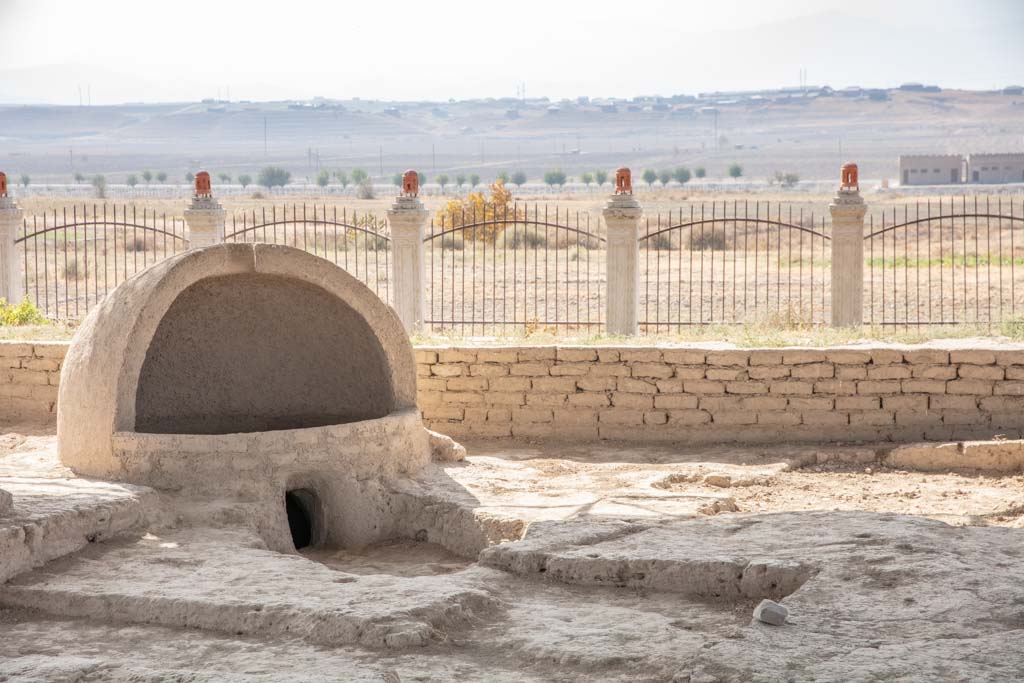
Not much is known about the Sarazmian people who inhabited the city all those years ago aside from speculations based on archeological findings during excavations of ancient Sarazm.
At that point in time, in the 4th millennium BC, there was no written language in the Central Asia region, so it is completely unknown what language they may have spoken or what they even called this place.
The religion that would have been practiced in Sarazm too is unknown, though archeological finds suggest that they believed in some kind of afterlife based on the early graves that have been exhumed in the ancient city and that the bodies were clearly buried with various valuable trinkets and sometimes food or animal parts.
Eventually, the Sarazmians are thought to have adopted Zoroastrianism based on some of the fire temples archeologists have uncovered in later sections of the ancient city.
Archeologists are still puzzled as to why Sarazm was eventually abandoned. No clear indication such as a natural disaster, conquest, or otherwise has been discovered in Sarazm, though a couple of theories exist.
One theory is that a pastoral tribe may have invaded and another theory and more regarded as a possibility is that climate changes and lack of resources forced the Sarazmian people to migrate south.
The second theory is supported by the archeological finds from the final period of the city not being of as high quality as they were in previous periods, suggesting that resources were on the decline.
With that said, Sarazm is still being excavated to the present day, so maybe one day they will find the answer as to what happened to Sarazm.
What was Excavated at Sarazm
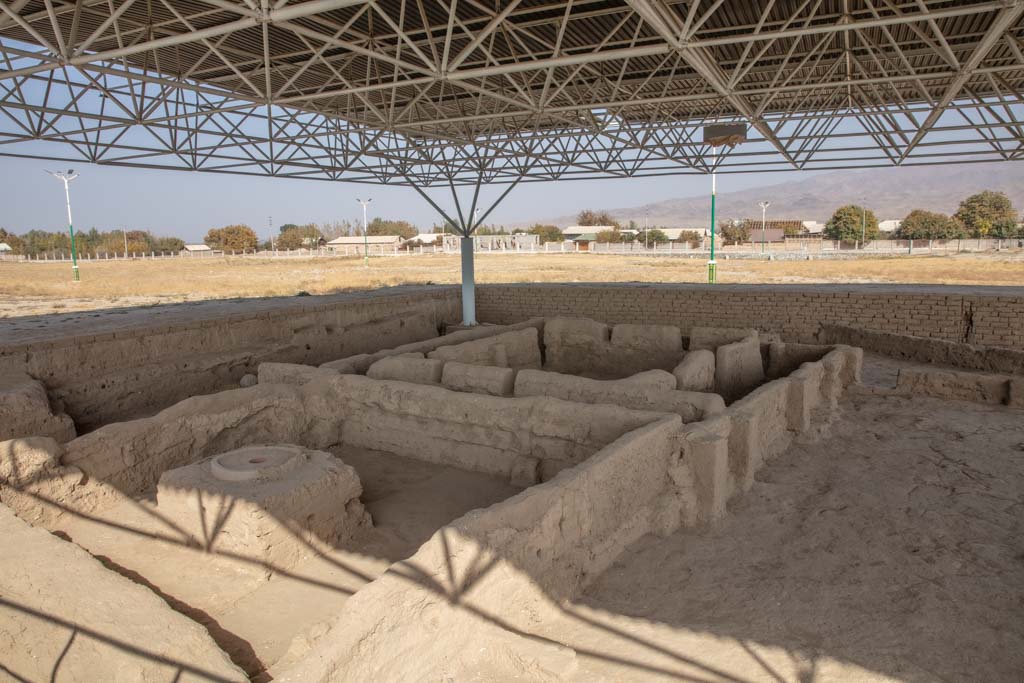
A few things for certain about the Sarazmians are that they had mastered early agriculture and the domestication of livestock, they were adept at architecture at the time, and they knew how to produce goods and understood trade with other settlements around them.
Ceramics were one of the many goods produced in Sarazm in their heyday and some of these Sarazmian pottery pieces have been found as far away as Iran to the southwest, Turkmenistan to the south, and Pakistan to the east.
Pretty impressive considering that Sarazm existed 3,000 years before the spider web maze of routes that comprised the Silk Road was established, likely making the Sarazmians a major forerunner to early trade.
The Sarazmians also had location on their side. Looking at where Sarazm lay geographically, it would in the future be at the crossroads of many routes of the Silk Road, so even back in their time of the 3000s BC, they had an advantage being so centrally located.

Another skill the Sarazmians were excellent at for their time is metallurgy.
Sarazm appears to have gone on to become a production hub for metal goods, such as axes, knives, jewelry, and daggers.
The region surrounding Sarazm is chock full of minerals, which is widely believed to be why the location was chosen to establish such an ancient city, paired with agricultural potential.
Evidence suggests that because of all these prosperous features of its location, Sarazm was a wealthy city. This can be seen in the artwork that was excavated in the area ranging from jewelry, paintings, decorated walls, and stone figures and objects.
Much of this Sarazmian artwork mentioned is held in another location and the most prized pieces are on display at the Tajik National Museum in Dushanbe.
The Princess of Sarazm
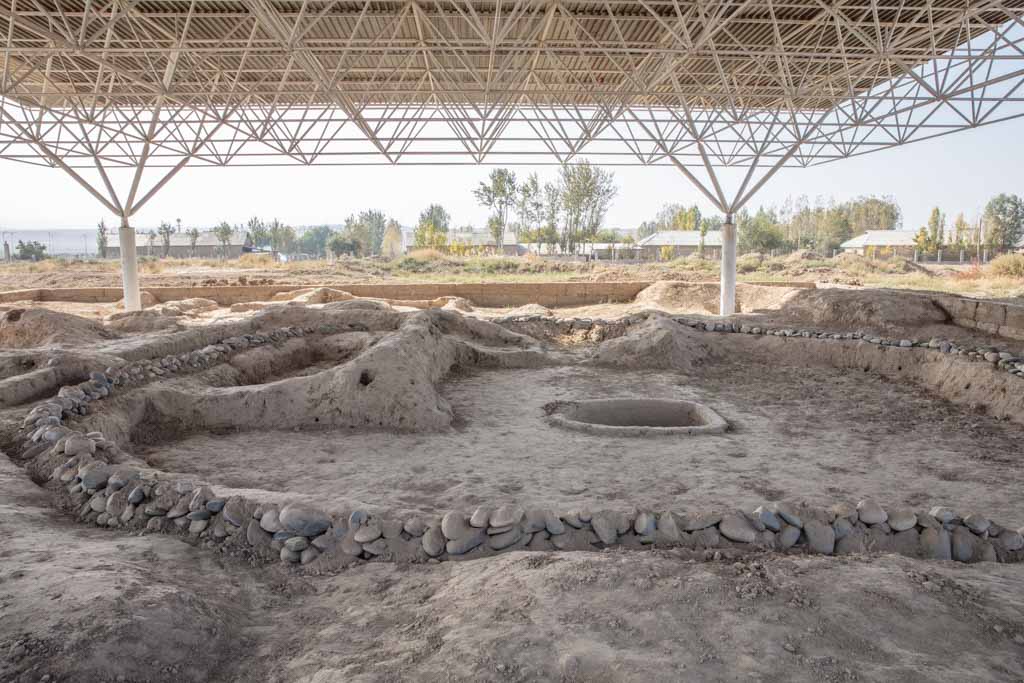
The Princess of Sarazm was the most groundbreaking of all the archeological finds during the excavations of Sarazm.
It’s assumed she must have been a noblewoman by the richly embroidered clothing she was wearing and the abundant jewelry she was found buried with.
She was found wearing jewelry that was adorned with beads of lapis lazuli, turquoise, gold, jasper, and other precious stones and metals.
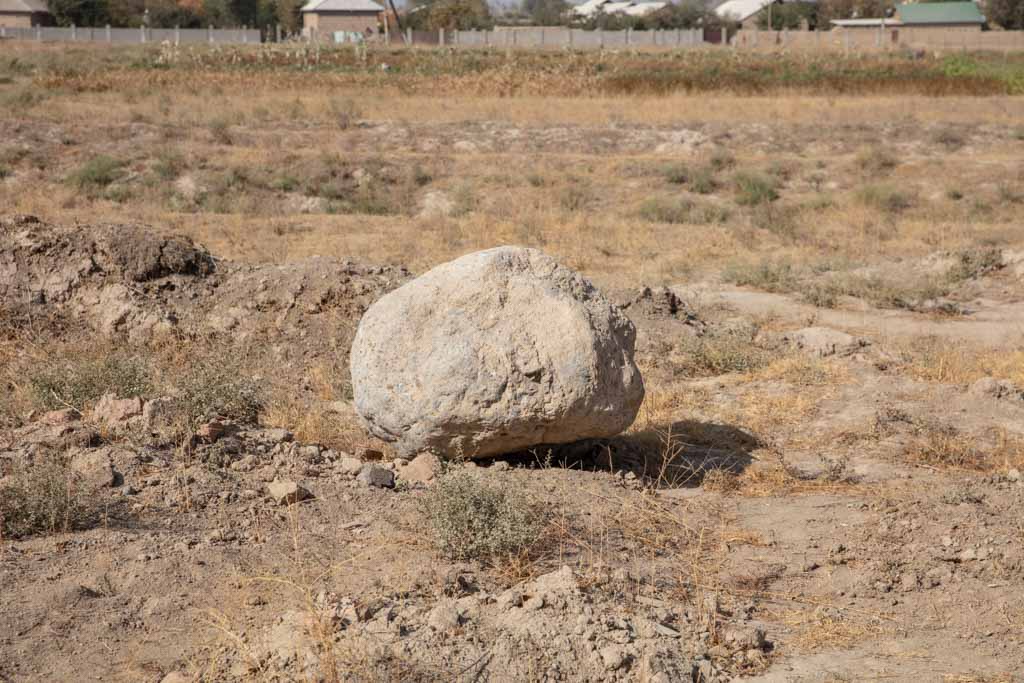
Another item found along with her in her grave was a copper mirror, which can be seen on the display at the National Museum in Dushanbe.
Archeologists believe that the Princess of Sarazm died around 3000 BC and was in her mid-30s at the time.
The grave of the Princess of Sarazm was unusually well-preserved given its ancient state. Archeologists believe that the arid conditions and dry sandy ground of the Sarazm-Panjakent area are to thank for her preservation.
Visiting the Archeological Area of Sarazm
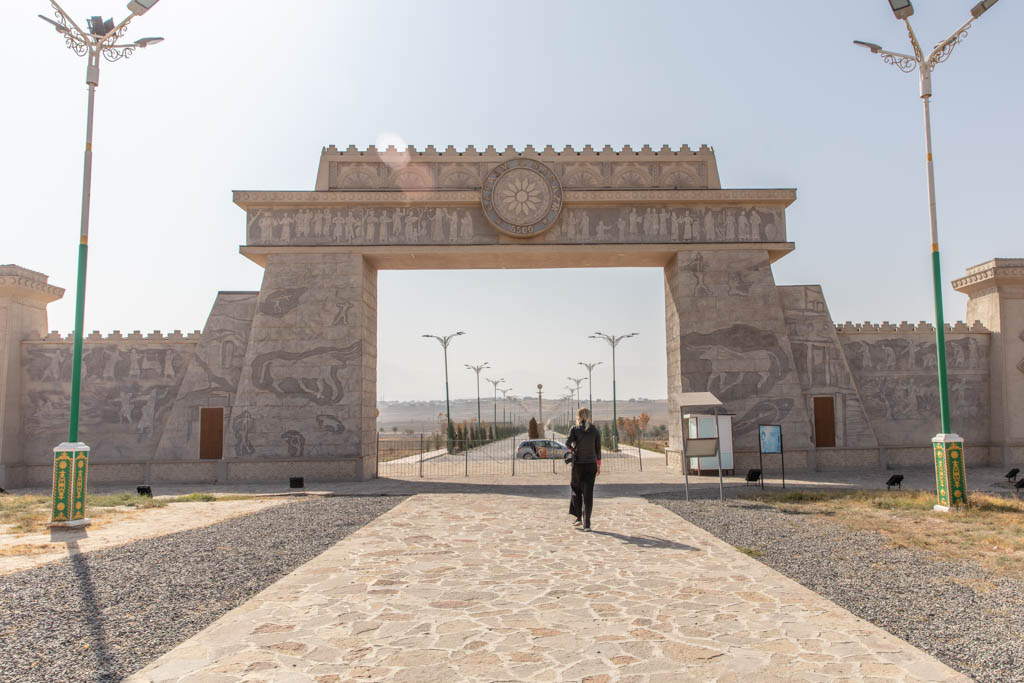
You will pass through a large gate to enter the Sarazm Archeological Site.
From here you will see sections of corrugated roofs that serve as pavilions over various dig sites.
Some of the sections do have signage explaining what archeologists believe the structures unearthed were for, others will require some guesswork.
There didn’t appear to be an entry fee to Sarezm when we visited but passing under the gate there was a stall set up that looked fairly new so it appears entrance will be charged at some point.
We were approached by an archeologist working in the area who gave us an impromptu tour of the Sarezm site, he refused any sort of payment in the end. If there is someone working or a local around the site when you visit don’t be surprised if they offer to show you around.
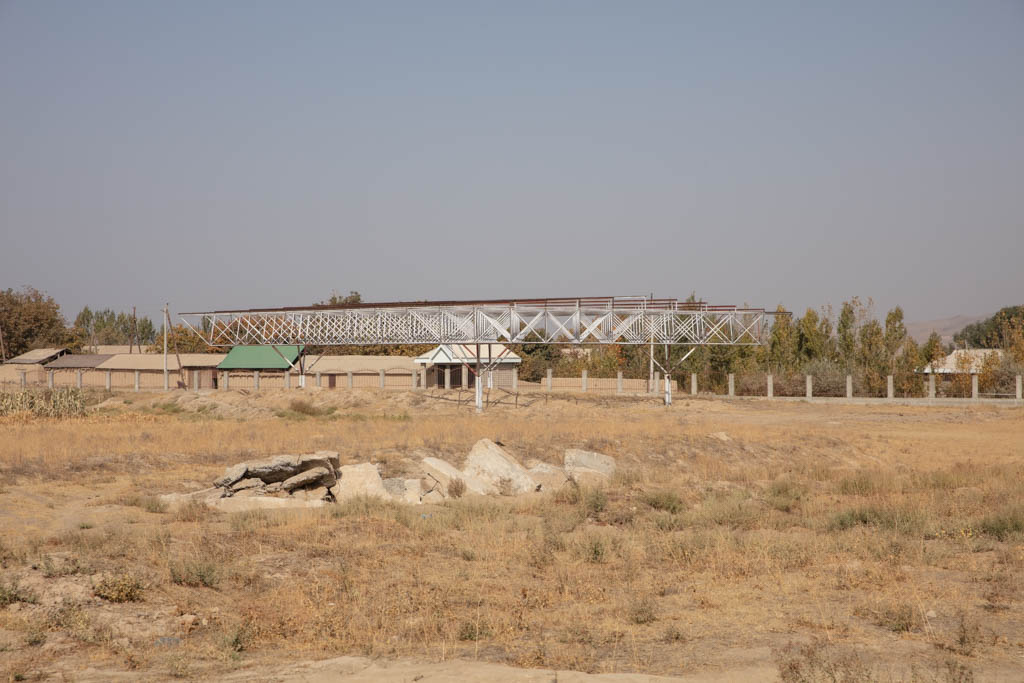
The Sarazm Museum
The Sarazm Museum, located just behind the covered pavilions over the dig sites, houses a small collection of artifacts collected from the Sarazm excavations.
Most of the major finds from the archeological explorations of Sarazm are either in Dushanbe or abroad.
How to Get to Sarazm From Panjakent (or Samarkand)
From Panjakent

From Panjakent you can order a Rakhsh Taxi (a Tajik version of the Uber or Yandex app) that will cost 50-60 TJS each way and extra for waiting time.
There are marshrutkas that ply this route also.
Look for Marshrutka #3 on the main road in Panjakent and hop on. The ride should cost 12-15 TJS per person.
From Samarkand

If you’re coming from Samarkand, follow my instructions in my post about the Panjakent-Samarkand Border Crossing.
Once across the border on the Tajik side, you’ll find cars waiting to head to Panjakent.
You can easily hire one of these guys to take you to Panjakent with a stop in Sarezm on the way.
Expect to pay somewhere around 100 TJS, give or take for the entire car to go to Panjakent from the border, including wait time at Sarazm.
Have any questions about visiting the Ancient Ruins of Sarazm?
Ask in the comments section below.

